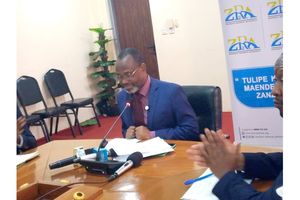From Mumbai to Dar: Bold lessons in infrastructure transformation

What you need to know:
- Mumbai’s transformation is the result of strong collaboration between government agencies, private investors, and urban planners, all working towards a shared goal of economic efficiency and improved quality of life.
As Tanzania’s cities grow at unprecedented rates, the cracks in urban infrastructure are becoming impossible to ignore.
Dar es Salaam, Arusha, Mwanza, and Dodoma are experiencing population booms that are putting intense pressure on transport networks. From long traffic jams to unreliable public transit, frustration is mounting for ordinary commuters and businesses alike. This year, Parliament approved Sh2.1 trillion for the Ministry of Works to fund development projects, including the construction of roads, airports, bridges, and more.
This level of investment reflects a growing acknowledgement by the government that infrastructure is no longer a secondary concern—it is a cornerstone of development. But while these problems may seem uniquely Tanzanian, we are not alone in facing them. There are global examples that offer a vision for change, and among them, Mumbai stands out.
One such example is Mumbai, India’s financial capital—a city that, despite being one of the most densely populated urban centres in the world, is undergoing an ambitious transformation of its infrastructure.
India is one of the largest countries with a sizeable economy. Some may wonder why it continues to invest heavily in infrastructure despite being a developing country with many advanced sectors. This ongoing development effort gives hope that Tanzania is not too late in its own growth journey.
What we are currently undergoing is part of a natural progression. Countries can and should draw valuable lessons from the infrastructure strategies of more developed nations such as India. Mumbai, with a population exceeding 25 million, has long grappled with many of the same issues Tanzania is facing today: severe traffic congestion, ageing road systems, limited space for road expansion, and growing environmental concerns.
Yet, instead of expanding roads horizontally—which in many African cities leads to displacement of homes, businesses, and green spaces—Mumbai is going vertical. Elevated roadways, flyovers, and metro lines are becoming the backbone of a more efficient and environmentally conscious urban transport system.
This shift offers a powerful lesson for Tanzania. It is not merely about technology or budget—it is about how we conceptualise urban growth. While Dar es Salaam has made commendable progress with the Bus Rapid Transit (BRT) system and some major road expansions, space constraints in urban areas make traditional expansion more difficult, costly, and disruptive. Elevated roads, as seen in Mumbai, allow for maximum impact with minimal land use—preserving homes, protecting trees, and reducing the environmental footprint. The challenge is not just building more roads, but building smarter, with future generations in mind.
Equally notable is how Mumbai’s infrastructure projects integrate long-term planning with environmental preservation. Despite dense settlements, tree-cutting is minimal, and eco-impact assessments are taken seriously. This level of urban discipline and foresight is something Tanzanian municipalities must begin to emulate if we are to build cities that serve both people and the planet.
Sustainable urbanisation demands such a balance, particularly as climate change continues to influence how cities must evolve.
But beyond physical infrastructure, there is also the question of urban governance and strategic coherence. Mumbai’s transformation is the result of strong collaboration between government agencies, private investors, and urban planners, all working towards a shared goal of economic efficiency and improved quality of life.
The projects are not disjointed but integrated, aligned with broader urban masterplans, and accompanied by continuous stakeholder engagement. This is precisely what Tanzania needs to replicate in its own way. Tanzania, too, must elevate infrastructure to a top-tier national development priority—not just in terms of funding, but also in vision, coordination, and policy execution.
The time for piecemeal interventions is over. With the right institutional frameworks, transparency, and political will, we can unlock the potential of our urban centres to become engines of prosperity.
Mumbai’s journey is far from over, but the steps it has taken to tackle decades of urban gridlock are already offering hope.
And it is not only Mumbai—cities like Jakarta, Bangkok, and Addis Ababa are also reimagining urban mobility in ways that merge tradition with modernity, necessity with innovation.
If Tanzania embraces smart, space-saving, and eco-sensitive infrastructure models, we too can build cities that are not only easier to live in, but also more competitive, productive, and sustainable.





